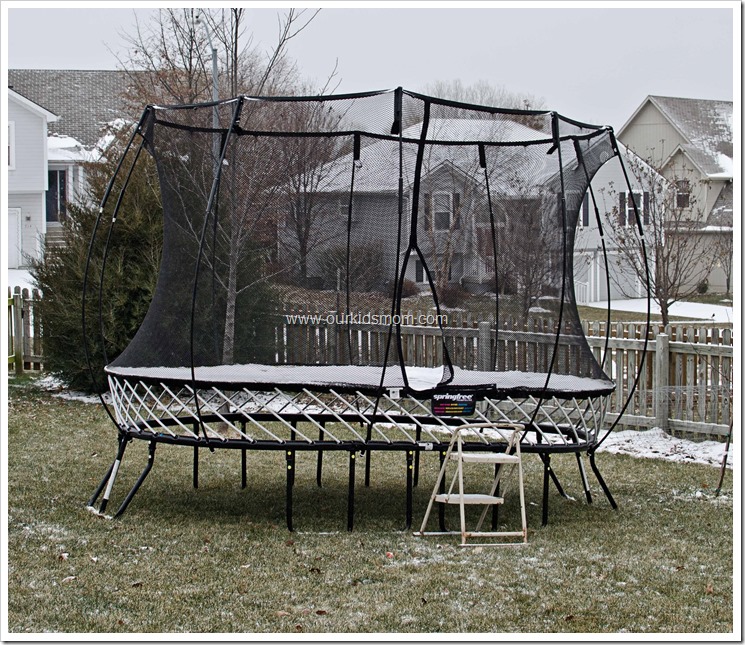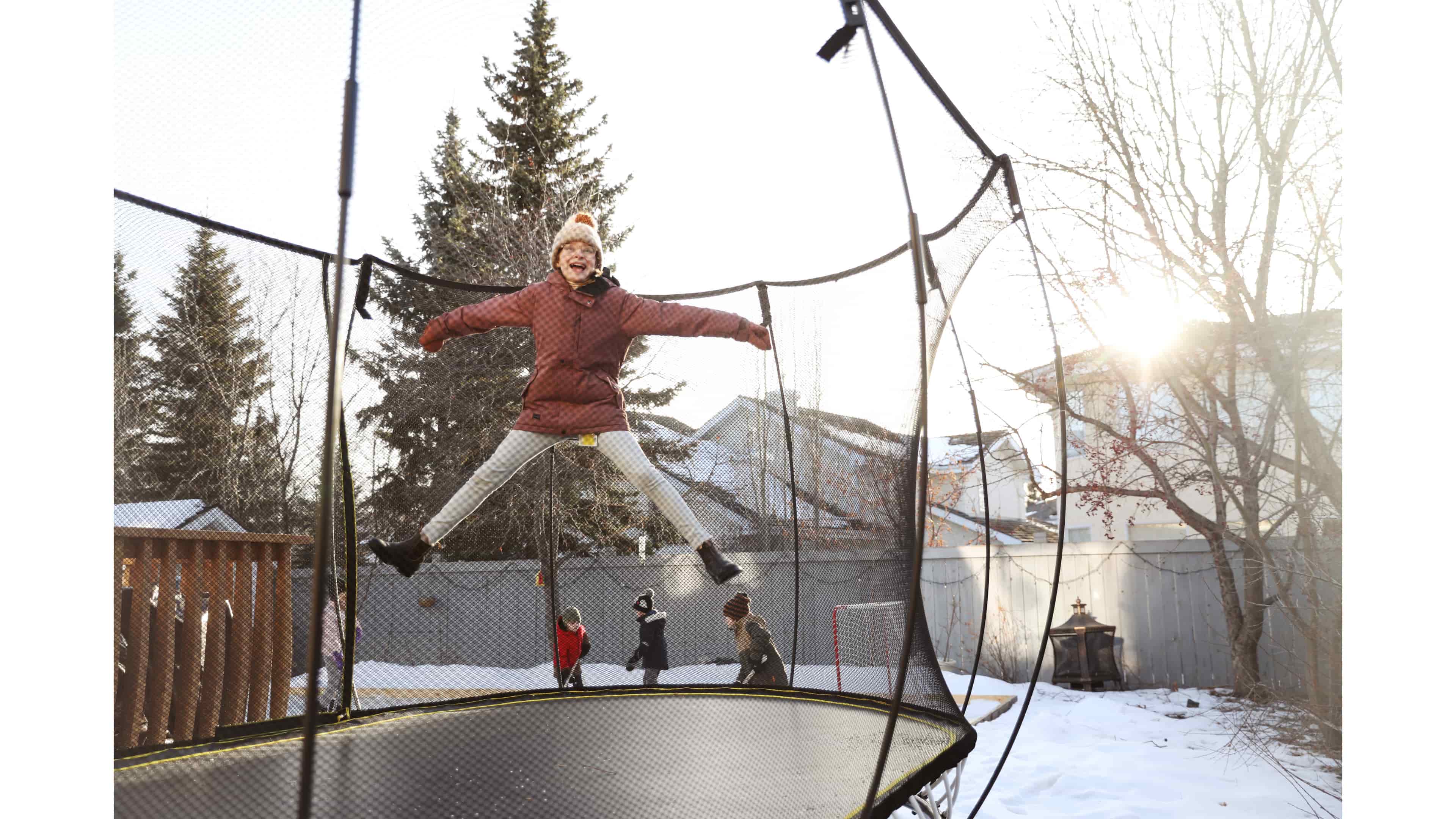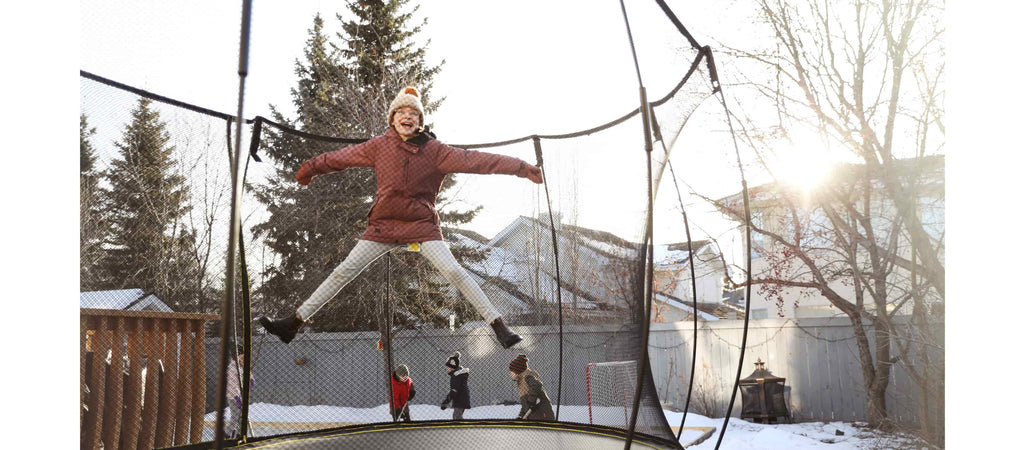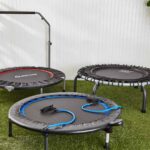To winterize a trampoline, remove and store the safety net and padding, and cover the jumping surface. Cleaning the equipment and checking for damage also helps extend its lifespan.
Preparing your trampoline for winter involves safeguarding it against harsh conditions to ensure its longevity and safety. Ensuring that your backyard centerpiece remains in top shape throughout the cold season is not only about maintaining the quality of your investment but also about keeping future bounce sessions safe.
A trampoline that braves the chilly months without proper care can suffer from wear and tear that compromises its structural integrity. By taking proactive steps before snow and ice hit, you can prevent weather-related damage and save yourself the trouble and expense of unexpected repairs or replacements. Embrace these trampoline winter care tips to guarantee endless fun for years to come.
The Risks Of Neglecting Trampoline Winterization
Winter poses risks to your trampoline if you ignore its proper care. Snow, ice, and cold can damage it. Winterization is essential to prevent costly repairs or replacements. Understand the risks and learn how to protect your investment.
Damage Types And Consequences
Trampoline materials can suffer in winter without the right precautions:
- Fabric Damage: Wet, heavy snow stretches the jumping mat.
- Frame Rust: Water and moisture lead to corrosion.
- Springs Lose Elasticity: Cold weather can make springs brittle.
These damages reduce safety and shorten your trampoline’s life.
Cost Implications Of Poor Maintenance
Ignoring winter care for your trampoline can result in unwanted expenses:
| Issue | Potential Cost |
|---|---|
| Replacement Mat | $50-$200 |
| Rust Removal or Frame Replacement | $30-$500+ |
| Spring Replacement | $20-$100 |
Regular maintenance avoids these costs and keeps your trampoline safe and fun for years.
Basic Pre-winter Trampoline Inspection
As summer fades and the chill of fall emerges, preparing your trampoline for winter is crucial. Basic pre-winter trampoline inspection ensures your equipment remains safe and in top shape for the next season.
Key Components To Check
Begin your inspection by focusing on several critical components:
- Frame: Check for rust or damage.
- Springs: Ensure they’re intact and tightly coiled.
- Mat: Look for tears or holes.
- Net: Verify it’s secure and free from rips.
- Pads: Assess for cracks and deterioration.
Spotting Signs Of Wear And Tear
Identifying wear early can save you trouble down the line. Here’s what to spot:
| Component | Signs of Wear |
|---|---|
| Frame | Rust spots, bends, or cracks |
| Springs | Stretched out, rusty, or missing springs |
| Mat | Tears, fraying, or fading color |
| Net | Holes, loose fittings, or frayed edges |
| Pads | Visible foam, splits, or waterlogged pads |
Cleaning Your Trampoline Before The Cold Hits
Winter is around the corner, and it’s vital to clean your trampoline before Jack Frost has a chance to hop on. A clean trampoline ensures durability, safety, and fun throughout the colder months. Let’s dive into the best way to tidy up your bounce buddy.
Step-by-step Cleaning Guide
- Remove debris: Brush off leaves, twigs, and dirt.
- Sweep the surface: Use a soft broom on the jumping mat.
- Mild soapy water: Sponge down with gentle soap.
- Rinse thoroughly: Use a hose without strong pressure.
- Dry it out: Let the trampoline air-dry or use towels.
- Inspect for damage: Look for any wear and tear.
Materials To Use And Avoid
| Use These | Avoid These |
|---|---|
| Soft Bristle Broom | Abrasive Scrubbers |
| Gentle Soap | Harsh Chemicals |
| Garden Hose | High-Pressure Washers |
| Microfiber Towels | Hard Brushes |
| Sponges | Bleach |

Credit: www.trampolinesinground.com
The Right Way To Disassemble And Store
As winter approaches, tucking your trampoline away properly ensures it remains safe until spring. Understanding the right way to disassemble and store your trampoline keeps it in top condition. Follow these steps for an effective winterizing process.
Disassembly Steps
- Gather necessary tools. You’ll need gloves, a screwdriver, and a rubber mallet.
- Remove safety pads and net. Detach these gently and fold them neatly.
- Take apart the frame. Work in sections to dismantle the steel frame carefully.
- Release the springs. Use a spring puller or tool to safely unhook each spring.
- Clean components. Wipe down all parts to remove dirt and moisture.
- Label sections. Label parts to easy reassembly.
- Check for damage. Inspect each component for wear or corrosion.
Secure And Safe Storage Solutions
Choosing the right storage method is crucial for your trampoline’s longevity. Here are top storage solutions:
- Use airtight bags for small parts to prevent rust and lose.
- Store frame and mat indoors, where it’s dry and temperature controlled.
- Shelves and racks can be handy for keeping larger parts organized.
- Invest in a storage unit if space is an issue at home.
Remember to avoid damp areas and places with drastic temperature change to prevent damage.
| Item | Condition | Storage Method |
|---|---|---|
| Springs | Clean and Dry | Airtight Bag |
| Frame | Disassembled | Indoor Shelf/Rack |
| Mat and Pads | Folded Neatly | Storage Bin/Unit |
Protective Measures For On-site Trampoline Winterizing
When cold weather hits, your trampoline needs extra care. Proper winterizing keeps it safe and extends its life. Follow these expert tips for on-site trampoline winter care.
Cover-up: Types And Installation
The right cover protects your trampoline from harsh elements. Consider these options:
- Weather Covers: Made for snow, rain, and UV protection.
- Thick Tarpaulins: Offer a shield against moisture and debris.
Installation tips:
- Choose the right size: It should fit snugly over your trampoline.
- Secure it properly: Use cords or trampoline straps to prevent blown-away covers.
Shielding Against Snow And Ice
Bearing weight can strain the trampoline. Follow these steps:
- Use a soft broom or brush to remove snow gently. Never use a shovel!
- Consider a trampoline snow removal tool designed for this task.
- Avoid ice accumulation: Choose a trampoline cover that prevents ice from sticking.
Remember, regular checks and maintenance throughout the winter can save you from costly repairs, ensuring your trampoline is ready to bounce back into action come spring!

Credit: www.ourkidsmom.com
Regular Winter Maintenance Checks
Trampolines need care throughout the year, especially in winter. Snow and ice can damage your trampoline if left unchecked. So, regular maintenance is key. Below are steps to keep your trampoline safe during the colder months.
Scheduled Inspection Routine
Set periodic checks to catch any issues with your trampoline. It ensures safety and longevity. You should inspect at least monthly. Here’s what to include:
- Check the frame for any signs of rust or cracks.
- Examine the jumping mat and springs for wear and tear.
- Ensure the spring cover is intact, protecting the springs from the elements.
- Look at the netting for any holes or damage.
Keep a record of these inspections. It helps you track the trampoline’s condition over time.
Addressing Issues Amidst The Cold
Finding an issue during winter means immediate action. Don’t wait for spring! Small problems can grow if left alone in cold weather.
Follow these steps:
- Remove any snow or ice immediately to avoid added weight and damage.
- If you found rust or weak spots, treat them right away with rust protectant or replace the parts.
- Repair any small holes or tears in the mat or netting to prevent them from getting bigger.
- Check all connections and tighten any loose bolts or springs.
Stay proactive with these winter care tips. Your trampoline will remain safe and fun for years to come!
Prepping For The Bounce Back Into Spring
Welcome to the rejuvenating season where we prep our beloved trampolines for the thrill of springtime leaps! The remnant chills of winter subside, and the anticipation of sunny days beckons us outdoors. Proper maintenance and care during the off-season will ensure that your trampoline is safe, sprightly, and ready for action.
Assembling And Safety Checking
Before the kids start jumping for joy, a comprehensive spring assembly and safety check are paramount. Take a look at the steps to ensure that your trampoline is a safe haven:
- Inspect all parts: Examine the frame, springs, and jumping mat for any damage or wear.
- Check for rust: If you find rust, consider using a rust-remover or replace the part.
- Revisit tension: Ensure that the springs are evenly stretched and properly attached.
- Secure the Frame: Confirm that the frame is tightly bolted and stable.
- Safety enclosure: Reattach and inspect the safety net for any tears or holes.
- Sweep it clean: Remove any debris from the surface of the mat.
A thorough check is crucial for the longevity of your trampoline and the safety of its users.
Updates Or Upgrades For The New Season
Spring rings in the perfect time for updates and upgrades. Kick-off the new season with a mini makeover for your trampoline. Here’s an upgrade checklist:
- New weather covers: Protect your trampoline from elements with a fresh cover.
- Better bounce: Replace the jumping mat for enhanced performance.
- Springs: Swap out old springs with new, higher-quality ones for more bounce.
- Pads and padding: Update worn-out spring pads to prevent injuries.
- Accessory fun: Add a basketball hoop or a slide for extra amusement.
Infuse new life into your trampoline with these smart upkeep choices to maximize enjoyment and safety.

Credit: www.springfreetrampoline.com
Frequently Asked Questions For How To Winterize A Trampoline: Best Tips On Trampoline Winter Care!
Can Trampolines Stay Outside In Winter?
Trampolines can remain outdoors during winter, but they require proper care. Protective covers, regular snow removal, and checking for rust and damage ensure longevity.
How Do I Protect My Trampoline In The Snow?
Use a weather-resistant cover to shield the jumping mat and springs. Clear snow regularly to prevent weight and moisture damage. Inspect for rust and deterioration frequently.
What’s The Best Way To Winterize A Trampoline?
To winterize a trampoline, first clean it thoroughly. Secure protective padding, and apply a weather-resistant cover. Anchor the trampoline against strong winds. Store the removable parts indoors.
Should I Disassemble My Trampoline For Winter?
It’s not mandatory to disassemble your trampoline for winter, but taking down the netting, pads, and springs can prevent potential weather damage, particularly in harsh climates.
Conclusion
Wrapping up your trampoline’s winter care is vital for its longevity. With our top tips, you’ve got the know-how to protect your investment from harsh weather. Remember, taking these simple steps can save you time and money, ensuring your trampoline stays springy and safe for years of enjoyment.
Happy bouncing!


